| Pages:
1
2 |
gueribo
Nomad
 
Posts: 469
Registered: 10-16-2014
Member Is Offline
|
|
Gueribo Trip Report #4: Mission San Javier
Next we drove the beautiful road from Loreto to San Javier Mission. This canyon was part of the old Camino Real. I remember driving this road ten
years ago, before it was paved. Now it’s a snap, but I still found myself driving slowly, taking in the views . . . cacti clinging to red hills,
vultures perched on fences warming their outstretched wings, and a few burros threading through the ravines.
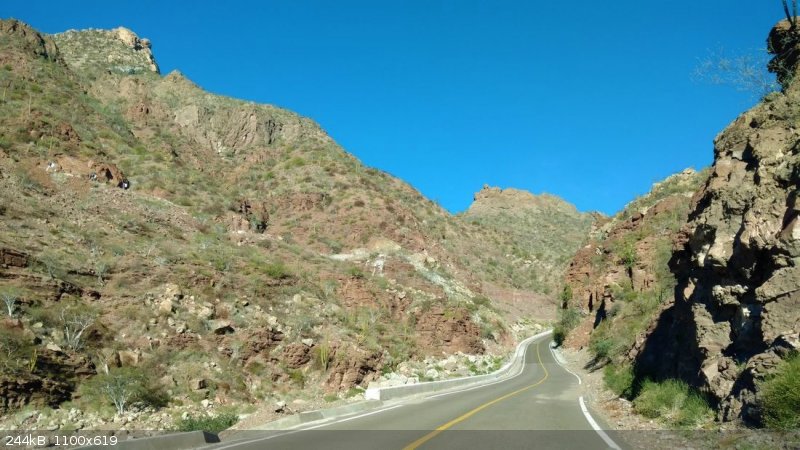
[Edited on 1-29-2019 by gueribo]
|
|
|
gueribo
Nomad
 
Posts: 469
Registered: 10-16-2014
Member Is Offline
|
|
Las Parras is near the summit, at a natural divide. On one side, arroyos run to the gulf. On the other, they run to the Pacific.
There’s a small chapel here, and a ranch selling fruit and treats if you care to stop. Las Parras means “vines,” as Father Piccolo in his
exploration encountered a thicket of wild grapevines in the canyon. There was an agricultural study done about ten years ago by friend and fellow
sojourner Gary Nabhan, citing Las Parras as an early visita that still contains a number of “heritage” crops later planted by Jesuits—avocadoes,
lemons, oranges, tangerines, grapes, guava, mangoes, olives, and plums.

[Edited on 1-31-2019 by gueribo]
|
|
|
gueribo
Nomad
 
Posts: 469
Registered: 10-16-2014
Member Is Offline
|
|
We drove on toward San Javier, passing Rancho Viejo (the old mission site, sometimes called Javier Viejo), and Rancho Nuevo where Bule, his wife, and
the mules live. A great launching point for a desert ride, if you have time.
Father Piccolo began mission efforts at the former site, and Ugarte reestablished the mission at the current location. The church is an arresting
sight if you haven’t seen it before. At these missions, I find myself with a mixture of feelings. Admiration for the construction and the
architecture, and sadness for what the arrival of the Spaniards meant for the indigenous population and their culture.
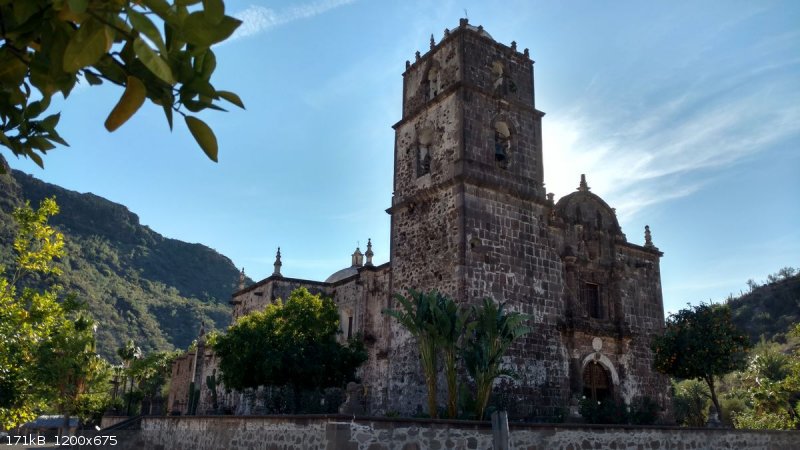
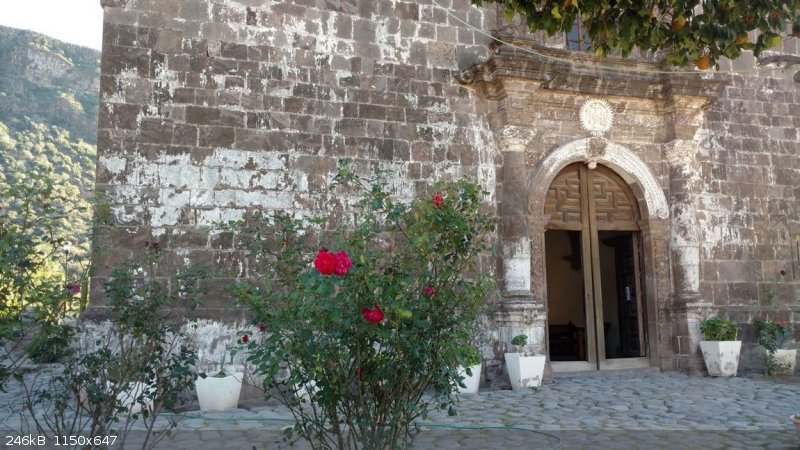
|
|
|
gueribo
Nomad
 
Posts: 469
Registered: 10-16-2014
Member Is Offline
|
|
To the left of the church is a cemetery, sheltering the graves of townspeople as well as natives decimated by disease. In Spanish colonial times, it
was common for parishioners to be buried under the church floor. But tombs were often compromised by water seepage, creating an unbearable smell and
the danger of epidemics. Eventually a law was enacted that required a separate cemetery placed a certain distance from the church, though priests and
important personages were still buried under the church floor. Often these graves were unmarked, so followers wouldn’t take relics.
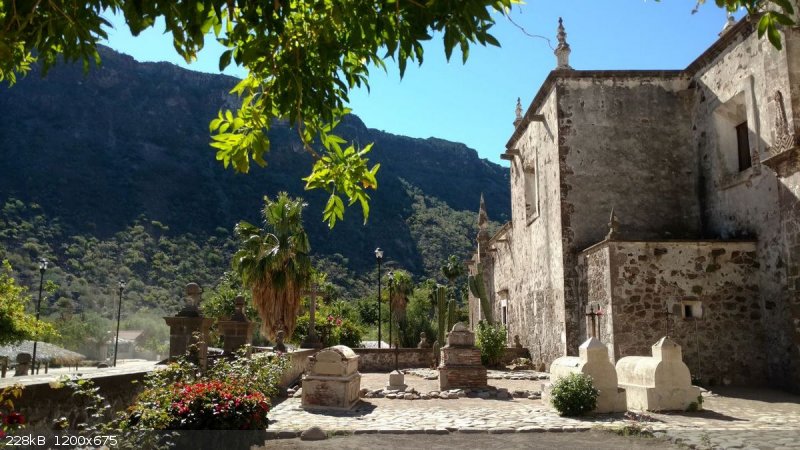
[Edited on 1-29-2019 by gueribo]
|
|
|
gueribo
Nomad
 
Posts: 469
Registered: 10-16-2014
Member Is Offline
|
|
Inside the church, there are a few embedded symbols. One is the recurring theme of the pomegranate. It’s a fruit symbolizing resurrection. There are
several pomegranates tucked around the church. There’s one hanging over the door underneath the Jesuit symbol, and several on the ceiling inside.
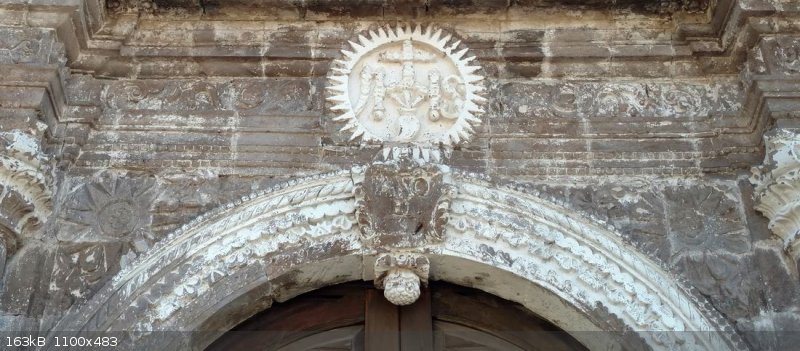
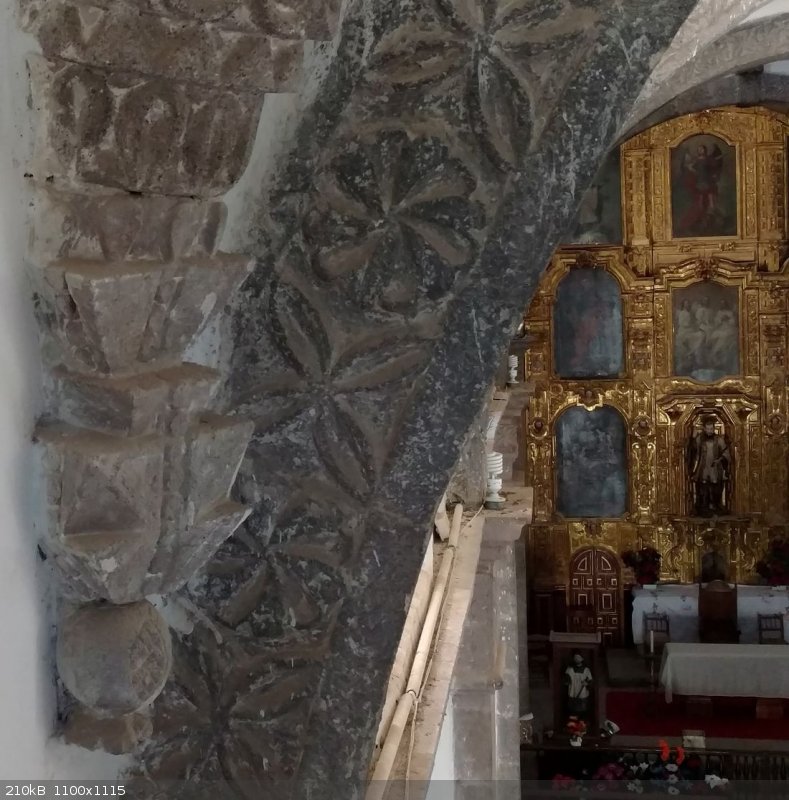
|
|
|
gueribo
Nomad
 
Posts: 469
Registered: 10-16-2014
Member Is Offline
|
|
There are also abbreviations of saints’ names on the church ceiling. La Virgen María, San Ignacio (founder of the Jesuits), San Francisco, San
Pablo, San José, Santa Ana, and La Virgen María (who gets double billing). Here’s one of the María stones:
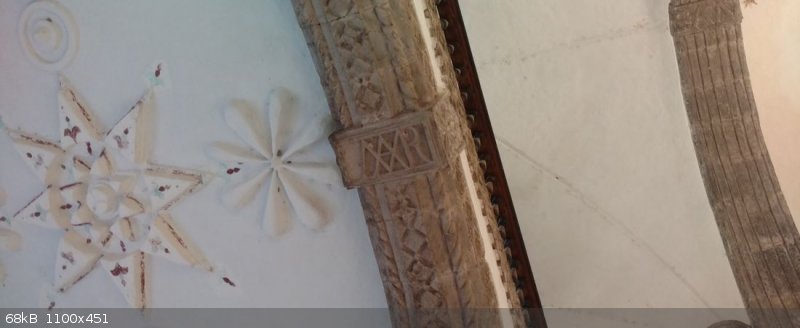
|
|
|
gueribo
Nomad
 
Posts: 469
Registered: 10-16-2014
Member Is Offline
|
|
The gold retablo (altarpiece) in front was transported from mainland Mexico across the gulf, and carried in pieces by burros up the trail. Quite a
feat. San Javier is the statue standing in the center.
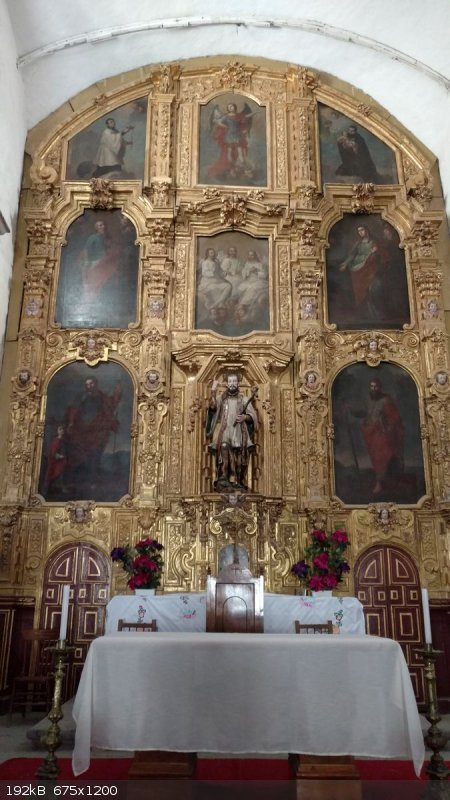
|
|
|
gueribo
Nomad
 
Posts: 469
Registered: 10-16-2014
Member Is Offline
|
|
Here’s the side door looking through to the cemetery. Again, the pomegranate!
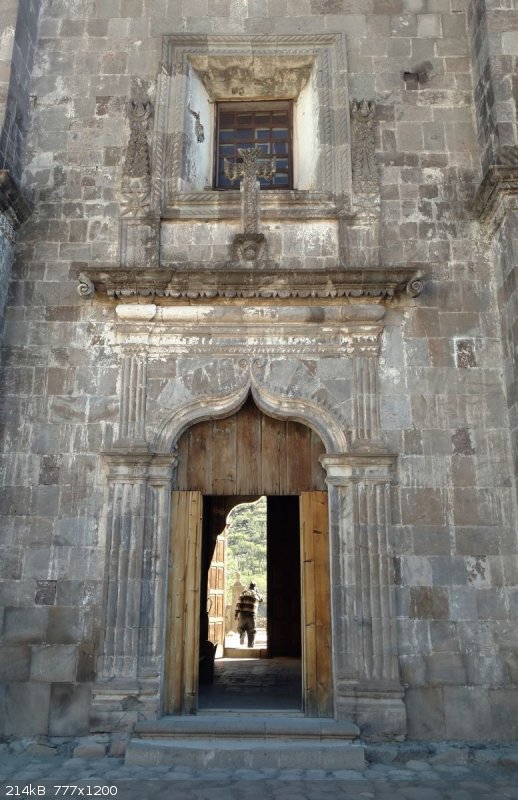
There are also angel faces scattered about. This one looks pretty crabby.
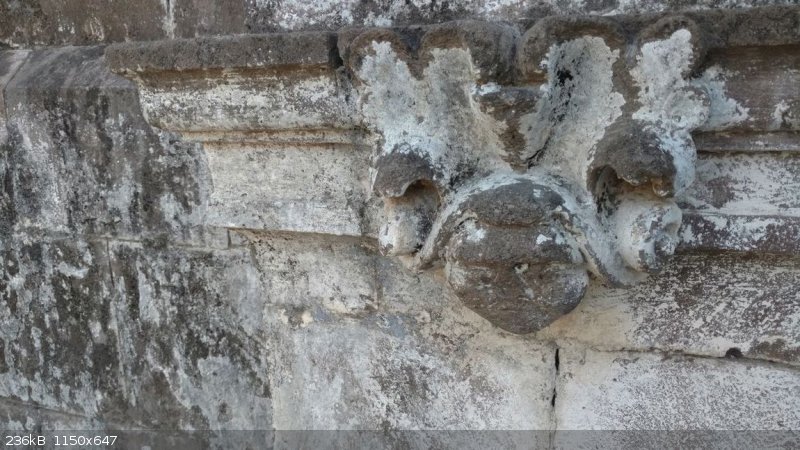
|
|
|
gueribo
Nomad
 
Posts: 469
Registered: 10-16-2014
Member Is Offline
|
|
Make sure you visit the mission museum. A lot of history here, including some items I haven’t seen elsewhere in my journeys—such as this unfolding
box used for traveling and teaching.
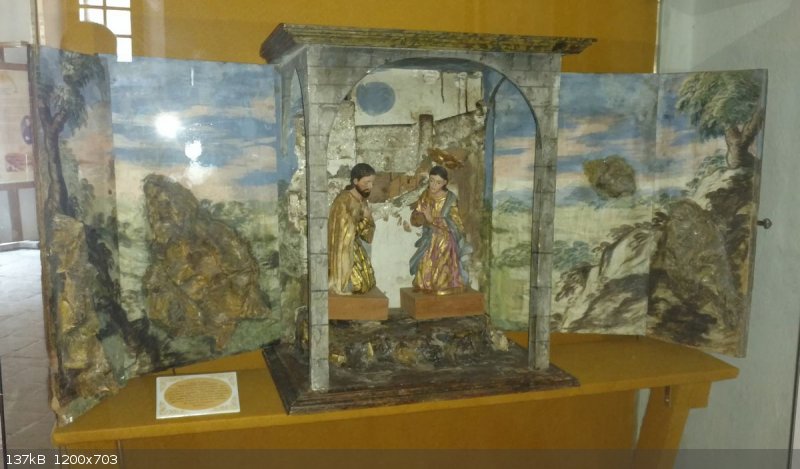
Below is a page from the baptismal register, in Ugarte’s handwriting. The entries detail the date, who was baptized, whether the child was
“legitimate,” who the parents were, and who the godparent was.
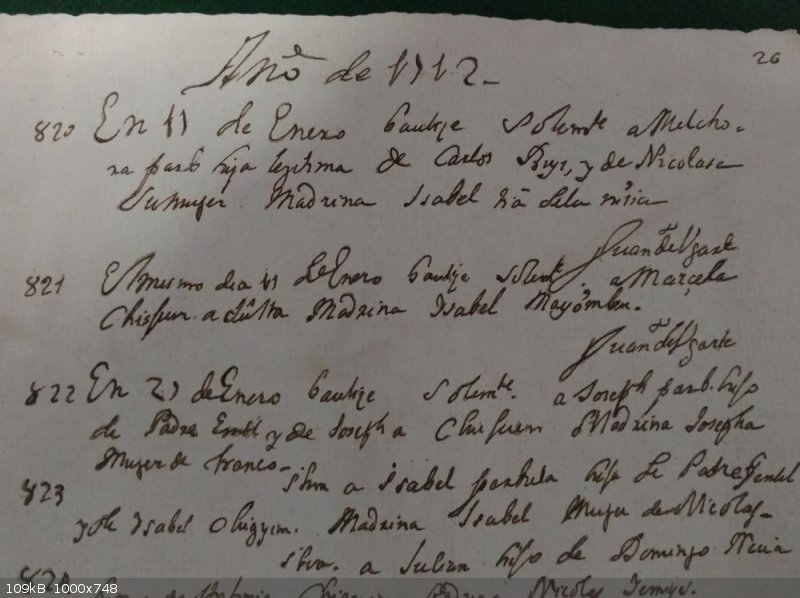
|
|
|
gueribo
Nomad
 
Posts: 469
Registered: 10-16-2014
Member Is Offline
|
|
The nave of the church is the main area where parishioners sit. It’s called a nave—from the Latin word navis, for boat—to indicate that the
sanctuary is like Noah’s ark . . . a place to shelter and escape the storm. Larger churches were always formed in the shape of a cross, and San
Javier is no exception with its two side altar wings.
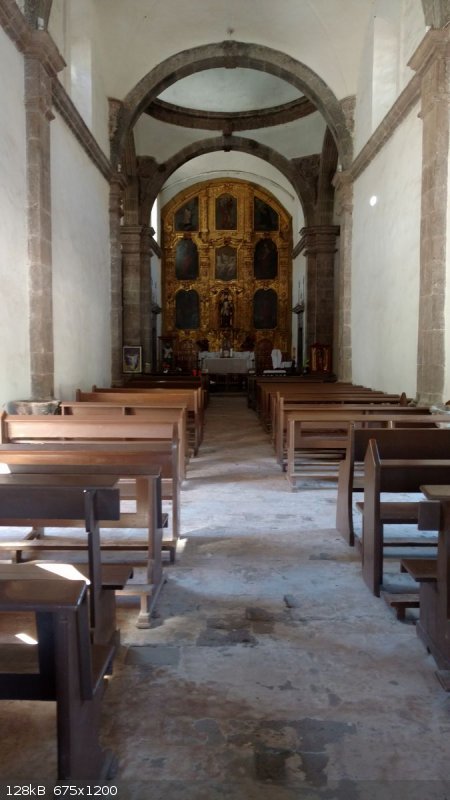
After our visit, we walked the one-street town, chatted with folks, paid a few pesos to use the bathroom, bought some guava empanadas at a little
tienda, and headed off down the rough road to the visita of La Presentación.
|
|
|
David K
Honored Nomad
        
Posts: 65412
Registered: 8-30-2002
Location: San Diego County
Member Is Offline
Mood: Have Baja Fever
|
|
Beautiful photos!
|
|
|
fishbuck
Banned
Posts: 5318
Registered: 8-31-2006
Member Is Offline
|
|
Amen Brother David!
"A ship in harbor is safe, but that is not what ships are built for." J. A. Shedd.
A clever person solves a problem. A wise person avoids it. – Albert Einstein
"Life's a Beach... and then you Fly!" Fishbuck
|
|
|
TMW
Select Nomad
      
Posts: 10659
Registered: 9-1-2003
Location: Bakersfield, CA
Member Is Offline
|
|
Excellent, thanks.
|
|
|
StuckSucks
Super Nomad
   
Posts: 2369
Registered: 10-17-2013
Location: Pacific Plate
Member Is Offline
|
|
Holy cow, I just learned a bunch of stuff! Thanks!
|
|
|
David K
Honored Nomad
        
Posts: 65412
Registered: 8-30-2002
Location: San Diego County
Member Is Offline
Mood: Have Baja Fever
|
|
Exactly...
Gueribo, I would love to see you write a book as you have the fascination with Baja's missions as I do.
I like your details on the features in the building and museum.
One book that has some building structure details and drawings is David Burckhalter's 2013 'Baja California Missions, In the Footsteps of the Padres'
which only covers the 8 intact stone missions: Loreto, San Javier, Mulegé, Comondú, San Ignacio, San Luis Gonzaga, Santa Gertrudis, and San Borja.
Like me, you have an interest in all mission-era sites... and it's a good thing because they are vanishing in our lifetimes!
|
|
|
David K
Honored Nomad
        
Posts: 65412
Registered: 8-30-2002
Location: San Diego County
Member Is Offline
Mood: Have Baja Fever
|
|
Terrific, if I can assist in any way, I am happy to!
|
|
|
David K
Honored Nomad
        
Posts: 65412
Registered: 8-30-2002
Location: San Diego County
Member Is Offline
Mood: Have Baja Fever
|
|
My first time up to San Javier was 11 years after this map was published. Only the paving of Hwy. 1 north from Loreto and west from Ligüí was
different than depicted...
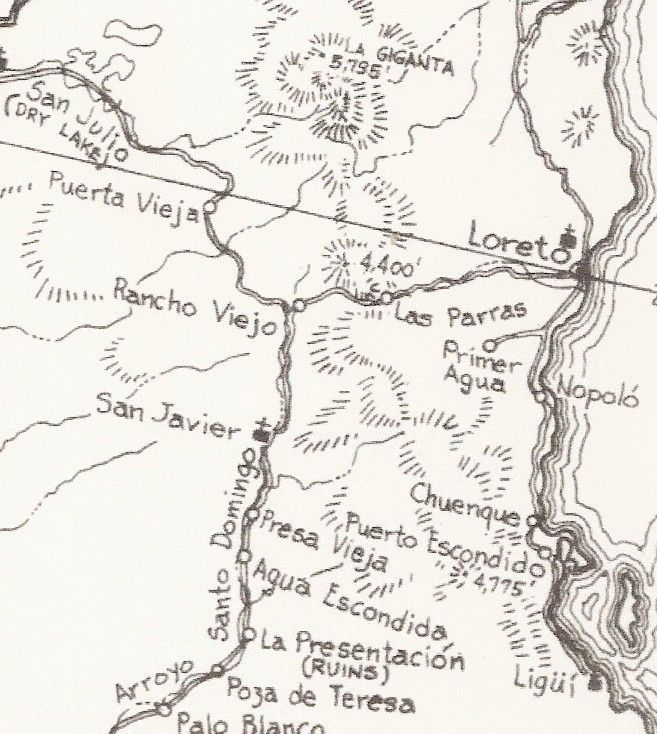
|
|
|
HeyMulegeScott
Senior Nomad
  
Posts: 717
Registered: 8-25-2009
Location: Orygone/Mulege
Member Is Offline
|
|
Thanks it's on the list to see. Might have to do some drone video for David K
|
|
|
David K
Honored Nomad
        
Posts: 65412
Registered: 8-30-2002
Location: San Diego County
Member Is Offline
Mood: Have Baja Fever
|
|
I would like that!
|
|
|
4x4abc
Ultra Nomad
    
Posts: 4454
Registered: 4-24-2009
Location: La Paz, BCS
Member Is Offline
Mood: happy - always
|
|
looking at the map -when did the name change from Chuenque to Juncalito?
Harald Pietschmann
|
|
|
| Pages:
1
2 |

